Sourdough Flatbread
This post may contain affiliate links.
This easy sourdough flatbread recipe is made using simple ingredients and can be used for so many different things. Seriously this might just be the most versatile sourdough recipe ever and requires no baking powder or commercial yeast.
Tortillas, souvlaki, wraps, pizza bases, pita, burritos, flatbread, naan - it's all covered with one, easy to mix and easy to work with dough!
This sourdough flatbread is also vegan, dairy and egg free. If you are looking for a sourdough recipe made with Greek yogurt, you might like this sourdough naan bread recipe, which is a little more traditional.
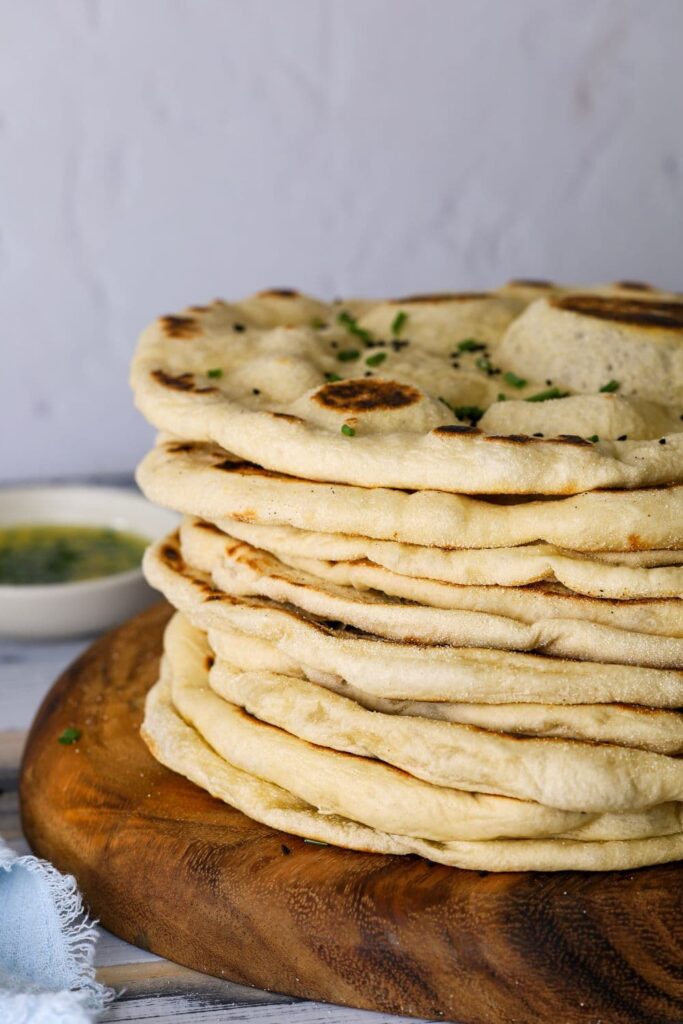
Why You’ll Love This Sourdough Flatbread Recipe
Versatile dough – Use it for tortillas, naan, wraps, pita, pizza bases, or even homemade chips—all from one simple recipe.
Soft, pliable texture – These flatbreads are foldable, bendable, and packed with that signature sourdough flavor.
Easy to make ahead – The dough can be refrigerated for up to 48 hours, making it perfect for busy weeknight meals.
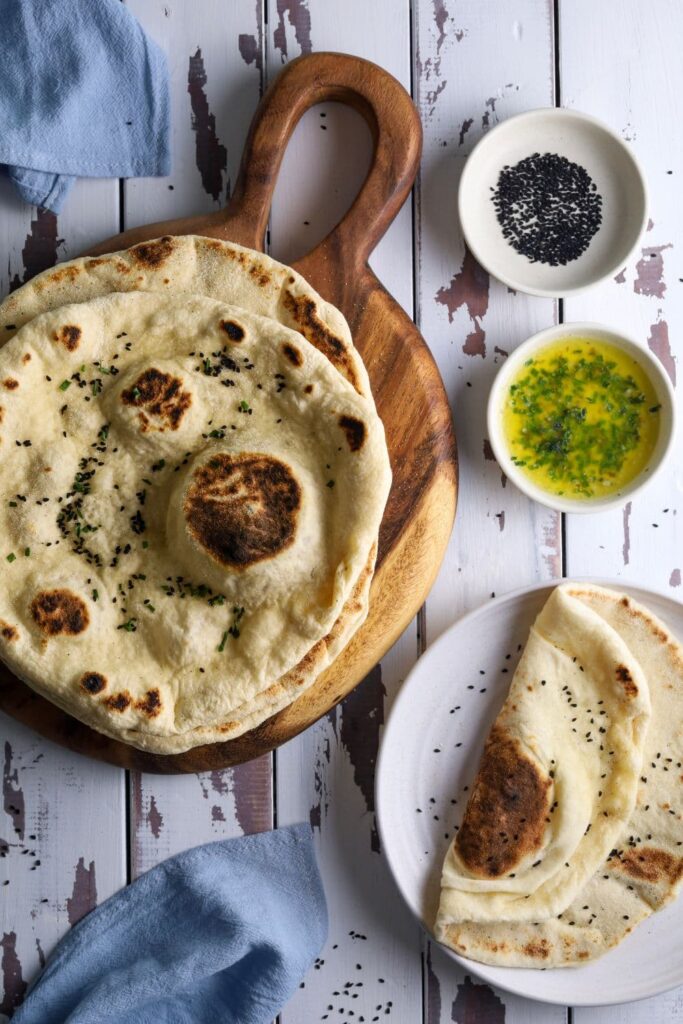
How This Sourdough Flatbread Recipe Came About
This recipe was actually a happy accident. My family eats a lot of sourdough pizza (seriously, it’s a weekly staple in our house). But we also love tacos, wraps, and anything you can stuff with meat, salad or veggies (check out all our fave sourdough dinner ideas).
One night, I had some leftover pizza dough and decided to toss it into a hot skillet instead of the oven. What came out blew me away—perfectly puffed, bubbly sourdough flatbreads that were soft, bendable, and downright delicious. From that moment on, this dough became a family favorite. It even makes the best sourdough pita chips!
The dough is silky smooth and not at all sticky, so the kids can get involved in shaping and rolling it too!
Ingredients
- Bread Flour - i always use bread flour to create these sourdough flatbreads, but you can use all purpose flour if you prefer. The dough can be a little stickier in this case, but use use slightly less water. You can also replace half the bread flour with whole wheat flour too. In this case you might need a splash more water.
- Water
- Sourdough Starter - this recipe can be made with either active sourdough starter or sourdough discard, the difference will be in the time it takes for the dough to ferment. One caveat here though is that if you are using discard, you'll want to make sure that your starter isn't completely brand new, otherwise your discard won't have the leavening power you need.
- Salt - I've used sea salt, but use whatever salt you like to use.
- Olive Oil - I've used olive oil to keep the dough soft and pliable. You can use melted butter if you prefer, but after testing this recipe multiple times, I find the dough texture is much better with olive oil.
How To Make Sourdough Flatbreads
Measure out all of your ingredients into a large mixing bowl. You don't have to pre mix, you can just add them all in on top of one another. This dough is extremely forgiving.
Gently combine all the ingredients so it forms a shaggy dough. Let the dough sit covered for around 30 minutes.
Once the dough is hydrated, it's time to knead it. You can do this by hand or you can use a stand mixer, it's completely up to you. You'll need to knead the dough by hand until the texture of the dough is smooth and silky. This usually takes around 10 minutes, depending on how hard you knead it.
Kate's Recipe Tip
- Using a stand mixer for this recipe makes it super easy and much faster than kneading by hand. It's definitely my chosen method of kneading when I'm busy with life, but still want delicious sourdough flatbread to go with dinner!
Once the sourdough flat bread dough is sufficiently kneaded, cover with plastic wrap or a damp dish towel and leave to rise at room temperature until it has doubled.
This may take several hours, depending on the temperature of your kitchen. Watch the dough and it will show you when it's ready, rather than going by a set amount of time. Using 200g of sourdough starter means the process will happen faster than if you used less (because the amount of sourdough starter you use really does matter).
Once the dough has doubled, separate the dough into equal pieces so they are ready to be rolled out. I find around 50g to 100g to be the perfect size, but you can make them larger or smaller if you like.
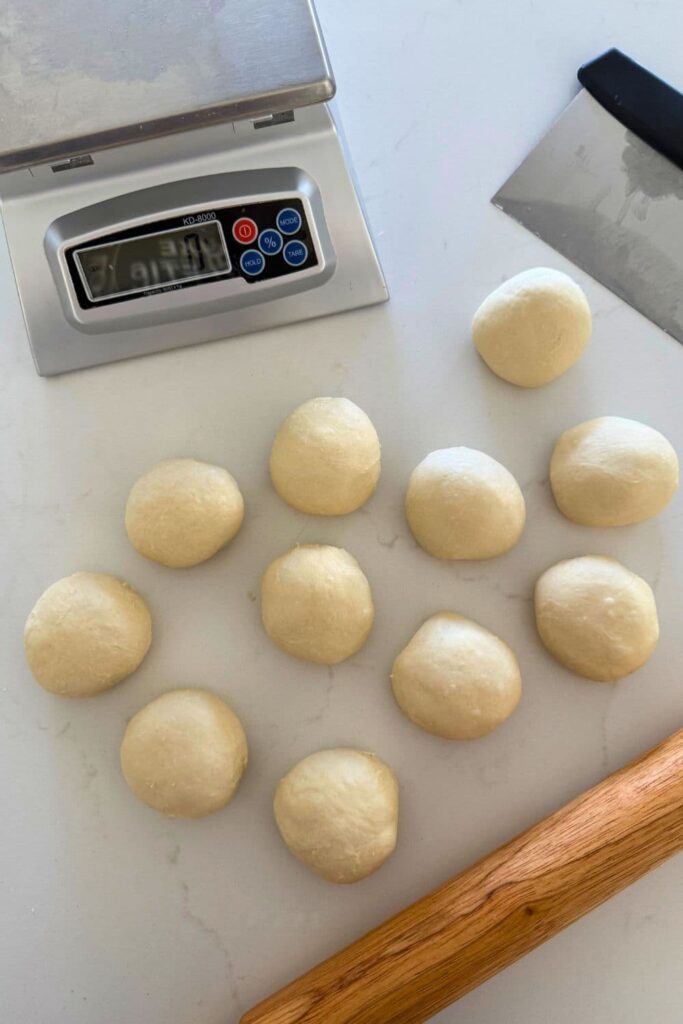
The easiest way to do this is to flip the dough onto your counter, making sure the sticky side is facing up. Use a metal dough scraper to gently cut chunks of the dough away. Gently form into a loose ball.
Leave the balls on your counter top, covered with a dish towel, for around 30 minutes to allow the gluten to relax. Once the dough has relaxed you can easily roll them out into rounds using a rolling pin.
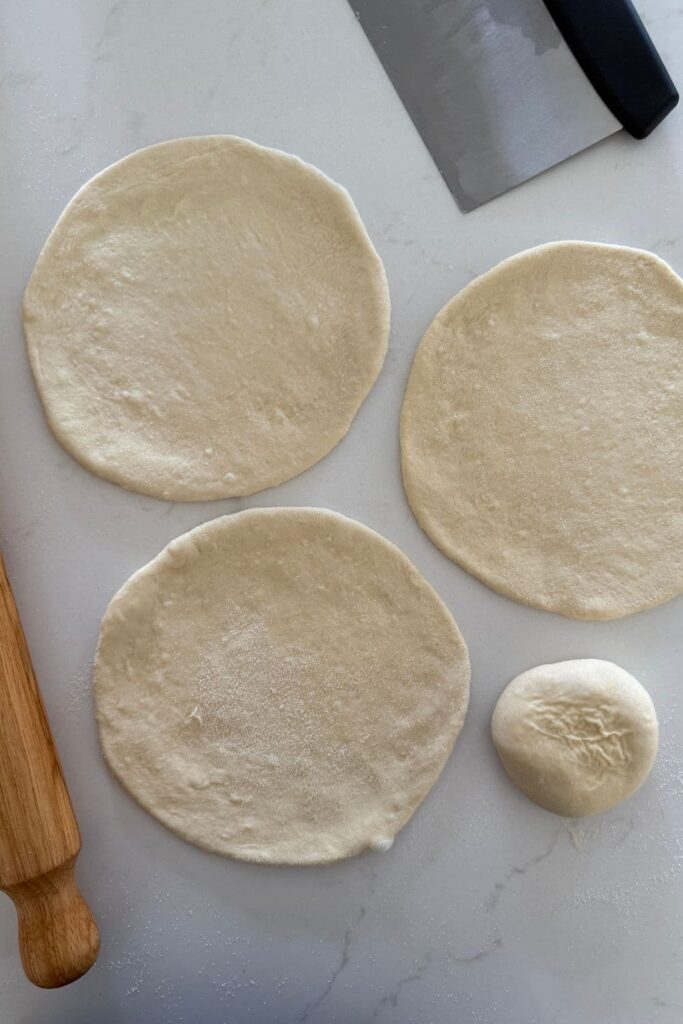
Have some semolina or cornmeal handy to use if you're using a rolling pin so the dough doesn't become sticky. The olive oil in the dough will make it quite elastic though.
When you're ready to cook, heat a frying pan, skillet or bbq plate until it's HOT! These flatbreads need a hot, fast cook.
Add a few drops of olive oil to your cooking surface and carefully drop the flat bread onto it (if you find the dough has "shrunk" a little from when you shaped it, just gently use your hands to stretch it a little before you drop it in the pan).

They will only need around 1 minute each side. They will bubble up and brown very quickly. Once it bubbles, flip to the other side to brown and then remove.
If you aren't eating them straight away, keep the flatbreads stacked and wrapped in a flour sack dish towel to ensure they stay nice and soft and pliable. The residual heat inside the stack maintains a beautiful soft texture to these sourdough flatbreads.
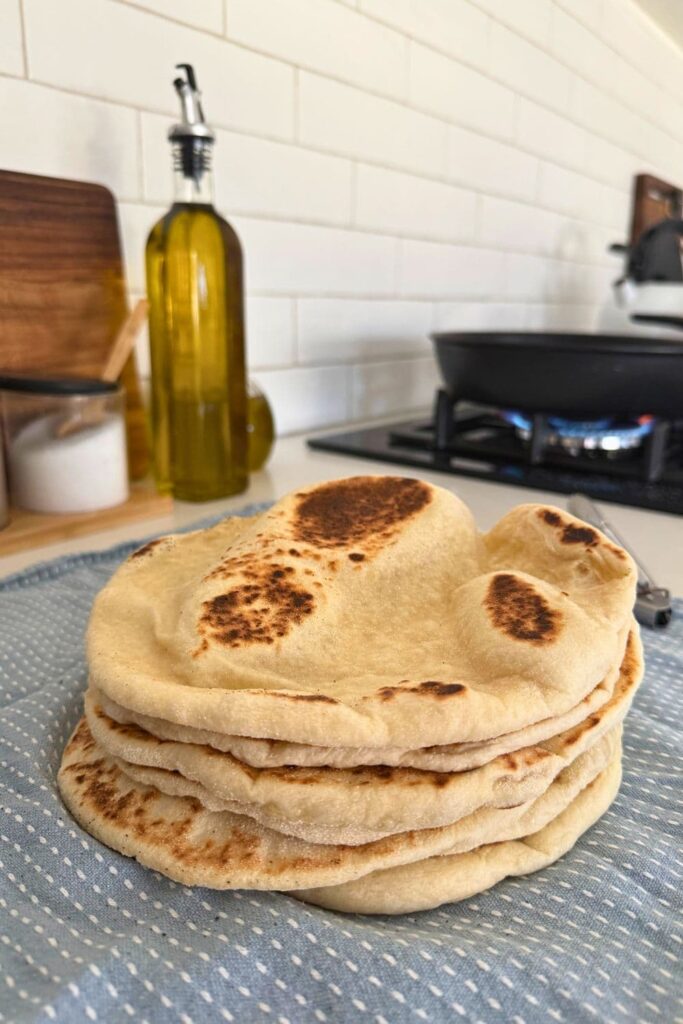
How To Use Sourdough Flatbreads
Here are just a few delicious ways to enjoy this dough
- Tortillas – Roll thin and round, and cook for the perfect sourdough tortillas (see my sourdough discard tortilla recipe for more tips).
- Wraps – Roll into larger rounds or ovals for soft wraps—great with grilled meats, salads, or simple lunch fillings.
- Souvlaki – Serve with marinated meats, fresh veggies, and sauces for a handheld feast.
- Naan Bread – Roll thicker, top with sesame seeds, cook on a hot skillet, and brush with garlic butter (for a more traditional recipe using Greek yogurt, use this sourdough naan bread recipe).
- Mini Pizza Bases – Use 100g dough balls for kid-friendly make-your-own pizzas. We actually love making pizzas with the leftover flatbreads!
- Pita Bread – Roll into thicker rounds, cook in a HOT skillet, and slice open to stuff (or use my traditional sourdough pita bread recipe here).
- Pita Chips or Tortilla Chips – Cut leftover flatbreads into triangles, drizzle with olive oil and seasonings, then bake until crispy. Perfect for dipping!
Honestly, the possibilities are endless with this dough. Once you try it, you’ll find yourself using it in place of store-bought wraps and flatbreads all the time.
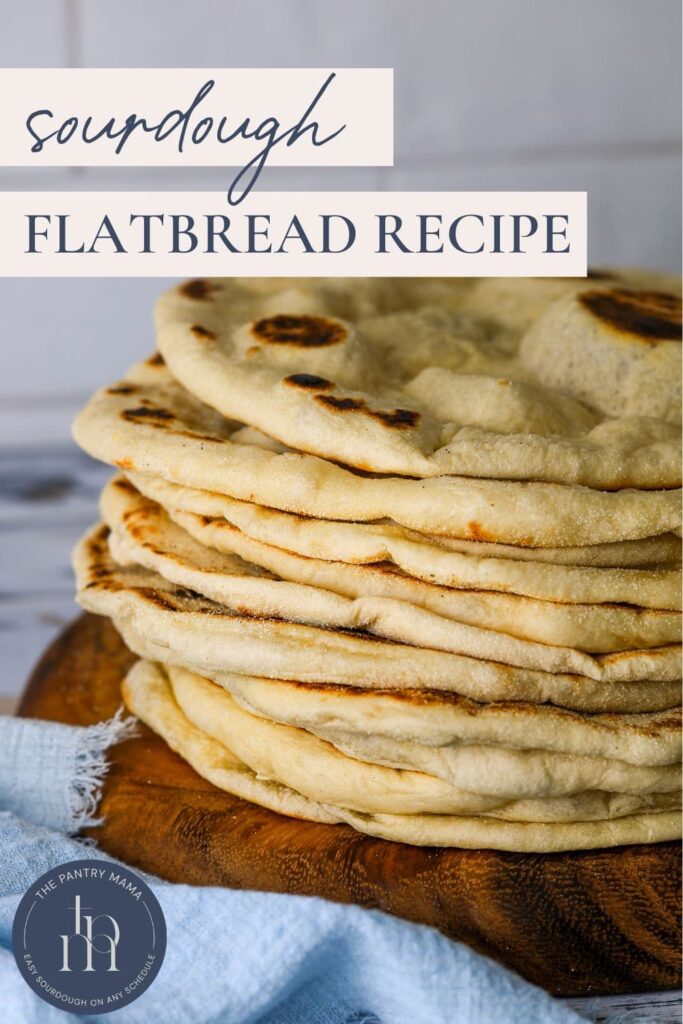
How to Store + Freeze
This dough can be made in advance and stored in the fridge for up to 48 hours before you want to use it. Allow it to come to room temperature before you roll it out as it will be much easier to handle.
When cooking your sourdough flatbreads, pile them into a flour sack dish towel and keep them wrapped to ensure they stay soft and pliable. They will stay soft like this for several hours, meaning you can prepare them well in advance if you want to.
Cooked sourdough flatbreads can be frozen between sheets of parchment paper inside a ziploc bag. Allow them to thaw at room temperature and warm gently in the microwave or oven before using.
Sourdough Flatbread FAQs
Yes! You can use sourdough discard to make flatbread. The flavor will be slightly milder since the dough won’t ferment as long, but you’ll still get soft, tasty flatbreads. If you want that classic tang, I recommend using an active starter and letting the dough ferment.
The trick is to wrap them in a clean tea towel as soon as they come off the skillet. The steam keeps them soft and pliable, perfect for folding or wrapping.
Absolutely. Once cooked and cooled, layer them with parchment paper in between, then store in a freezer-safe bag. They’ll keep for up to 3 months. To reheat, just warm them in a skillet or wrap them in foil and pop into the oven.
This dough can be made in advance and stored in the fridge for up to 48 hours before you want to use it. Allow it to come to room temperature before you roll it out as it will be much easier to handle.
Sourdough flatbread is naturally leavened with wild yeast and bacteria from your sourdough starter, giving it a lovely tangy flavor and a softer, chewier texture compared to yeasted or store-bought flatbreads. If you don't have a sourdough starter, here are some easy instructions for making a sourdough starter.
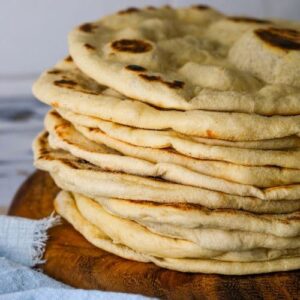
Sourdough Flatbread
Equipment
- Stand Mixer (optional)
- Rolling Pin
- Cast Iron Skillet (or frying pan)
Ingredients
- 500 g Bread Flour
- 280 g Water
- 200 g Sourdough Starter (fed and active)
- 30 g Olive Oil
- 15 g Salt
Instructions
- Measure out all of your ingredients into a large mixing bowl. You don't have to pre mix, you can just add them all in on top of one another. This dough is extremely forgiving.Gently combine all the ingredients so it forms a shaggy dough. Let the dough sit covered for around 30 minutes.
- Once the dough is hydrated, it's time to knead it. You can do this by hand or you can use a stand mixer, it's completely up to you. You'll need to knead the dough by hand until the texture of the dough is smooth and silky. This usually takes around 10 minutes, depending on how hard you knead it.If you are going to use a stand mixer you can find some tips on this in the recipe notes below.
- Once the sourdough flat bread dough is sufficiently kneaded, cover with plastic wrap or a damp tea towel and leave to rise until it has doubled. This may take several hours, depending on the temperature of your kitchen. Watch the dough and it will show you when it's ready, rather than going by a set amount of time. Using 200g of sourdough starter means the process will happen faster than if you used less (see recipe notes)
- Once the dough has doubled, separate the dough into smaller balls so they are ready to be rolled out. I find around 50g to be the perfect size. The easiest way to do this is to flip the dough onto your counter, making sure the sticky side is facing up. Use a metal dough scraper to gently cut chunks of the dough away. Gently form into a loose ball. Leave the balls on your counter top, covered with a tea towel, for around 30 minutes to allow the gluten to relax (see notes for more info).
- Once the dough has relaxed you can easily roll them out into rounds using a rolling pin.Have some semolina or cornmeal handy to use if you're using a rolling pin so the dough doesn't become sticky. The olive oil in the dough will make it quite elastic though.
- When you're ready to cook, heat a frying pan, skillet or bbq plate until it's HOT! These flat breads need a hot, fast cook. Add a few drops of olive oil to your cooking surface and carefully drop the flat bread onto it (if you find the dough has "shrunk" a little from when you shaped it, just gently use your hands to stretch it a little before you drop it in the pan). They will only need around 1 minute each side. They will bubble up and brown very quickly. Once it bubbles, flip to the other side to brown and then remove.
- If you aren't eating them straight away, keep the flatbreads stacked and wrapped in a tea towel to ensure they stay nice and soft and pliable.
Notes
If your dough is still sticky, sprinkle a little extra flour and knead for a further minute or two until it becomes silky smooth. You'll know it's ready when you can hear it slapping the sides of the bowl. Generally it takes 4-6 minutes of kneading but the time will depend on your dough as well as the strength of your machine.
Notes on Bulk Fermentation
This recipe uses 200g of sourdough starter, which means that your dough will ferment fairly quickly. For more information on how the amount of starter affects fermentation time, go here. Notes on Size of Dough Balls
Just a note here regarding the size of each flatbread - what you want to use them for will depend on the size you make them. 50g is perfect for a round flatbread. 100g would be better if you want a naan or souvlaki wrap.
Nutrition

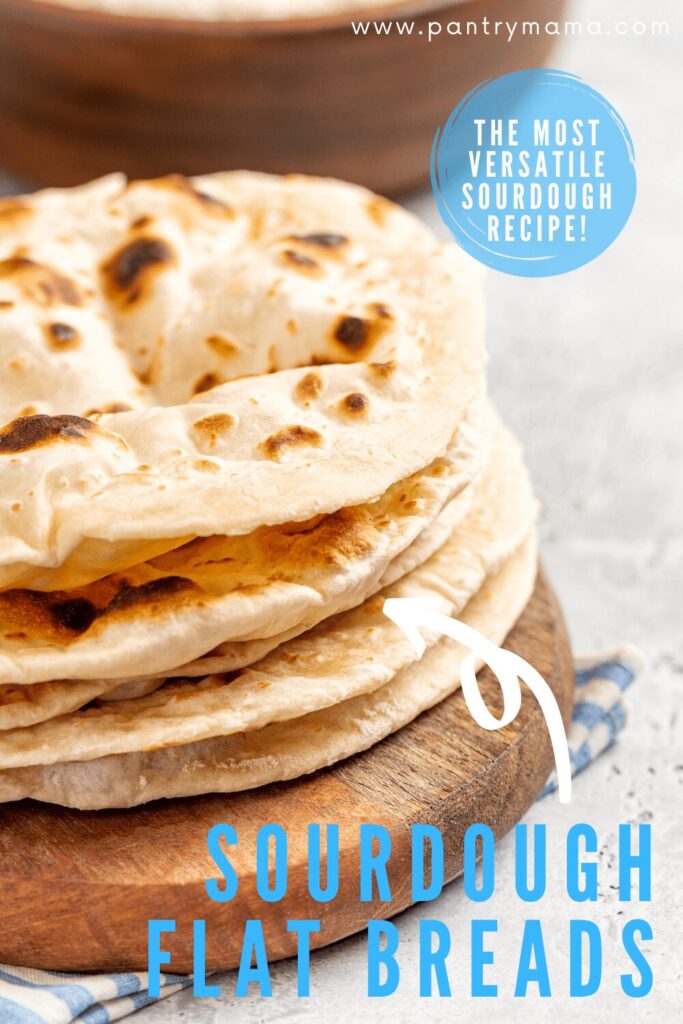
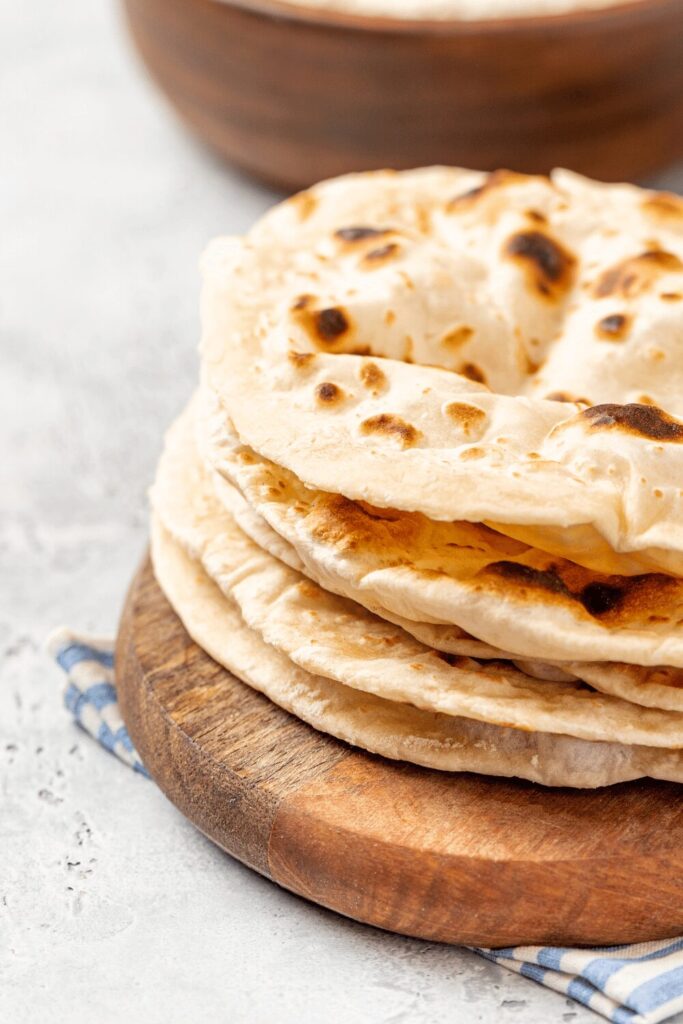
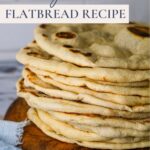
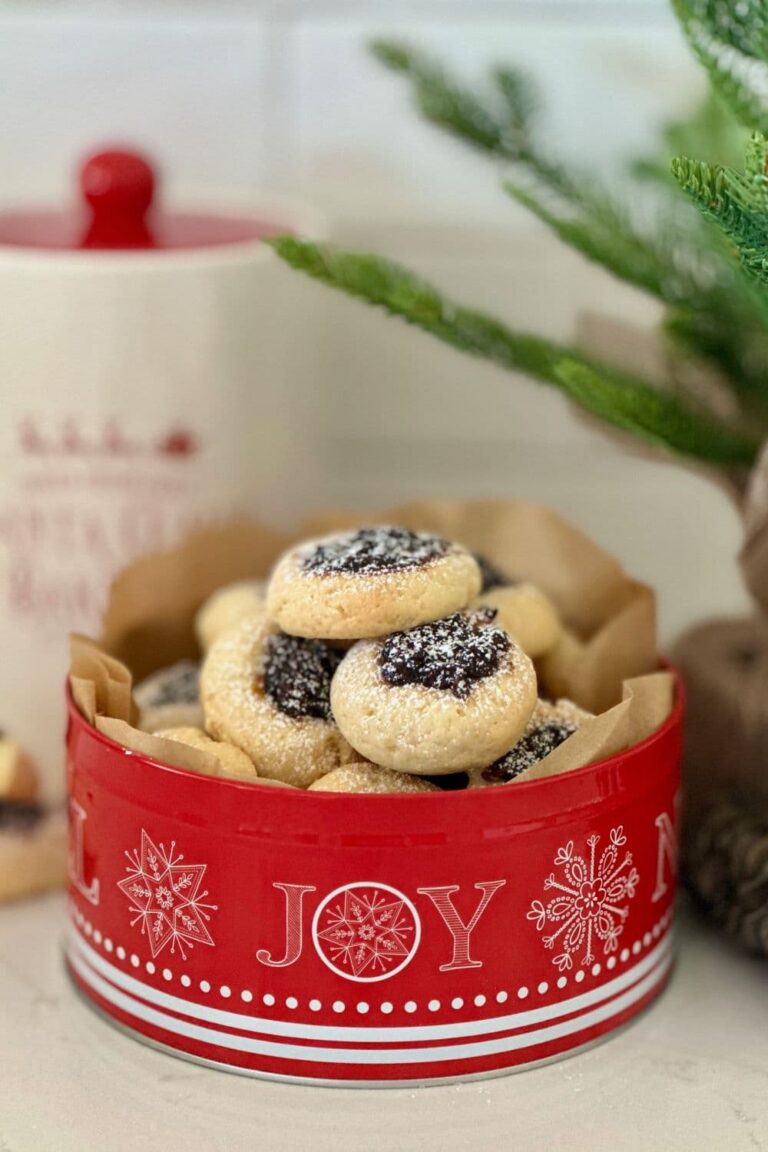
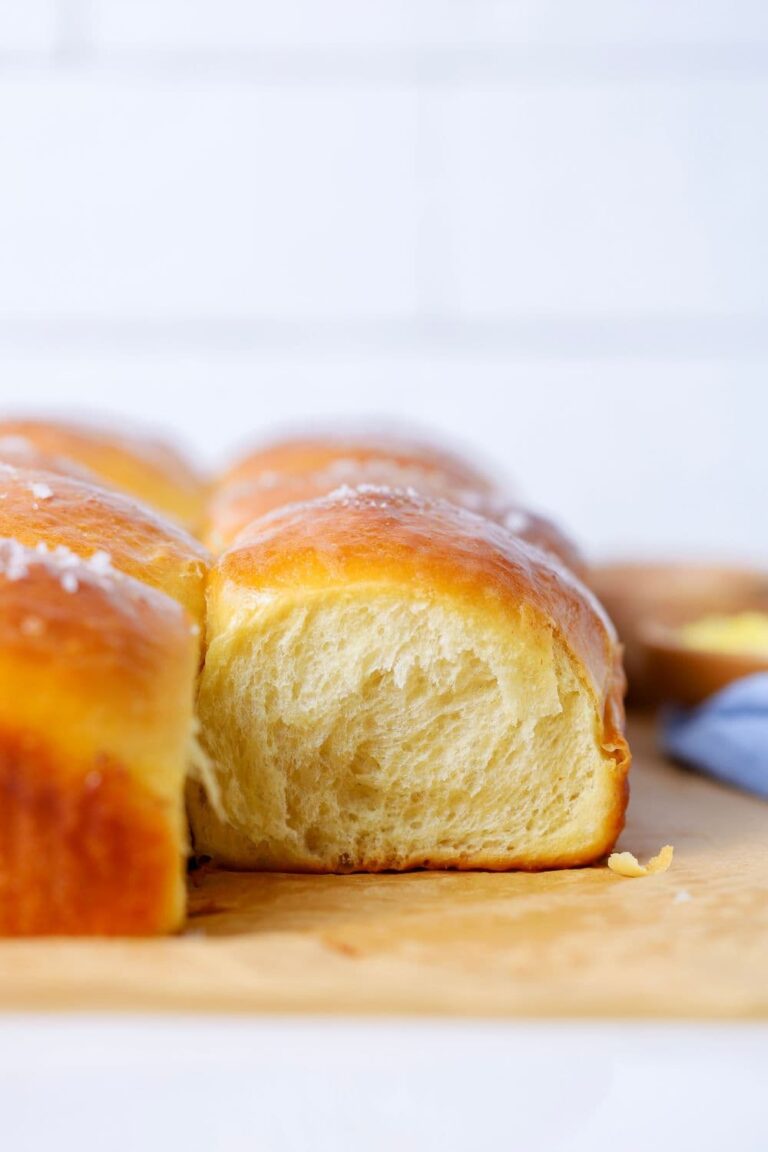
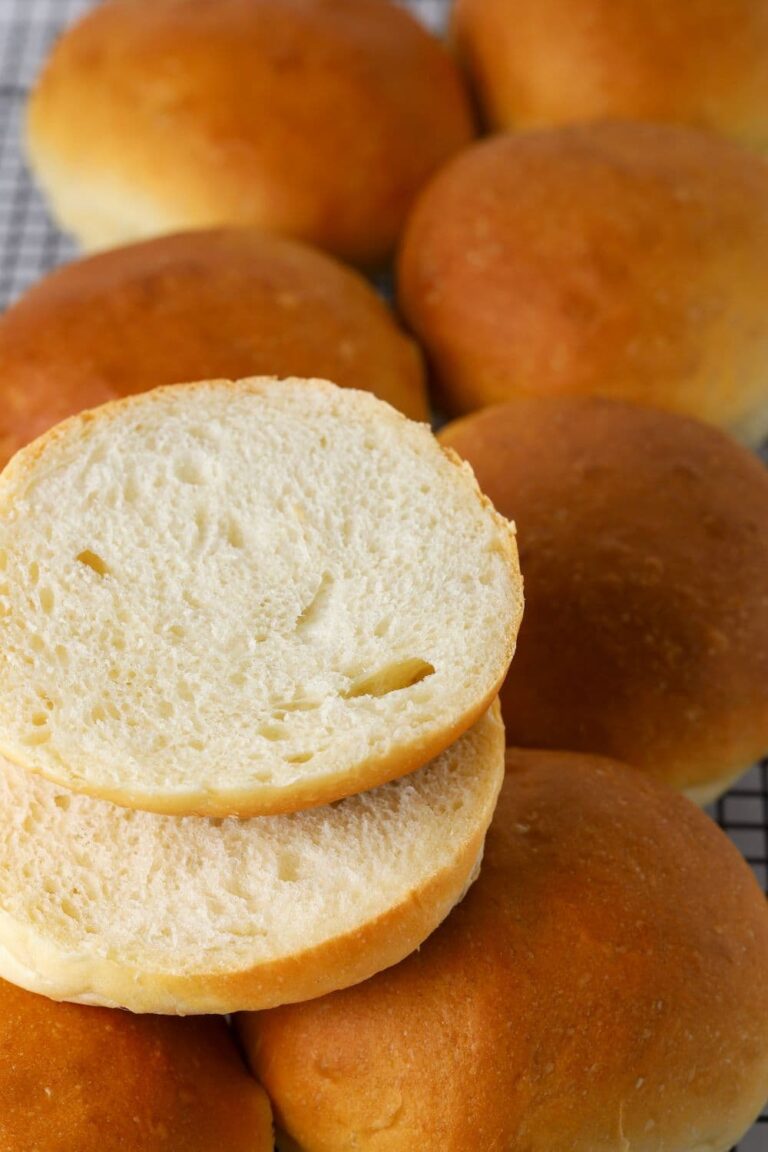
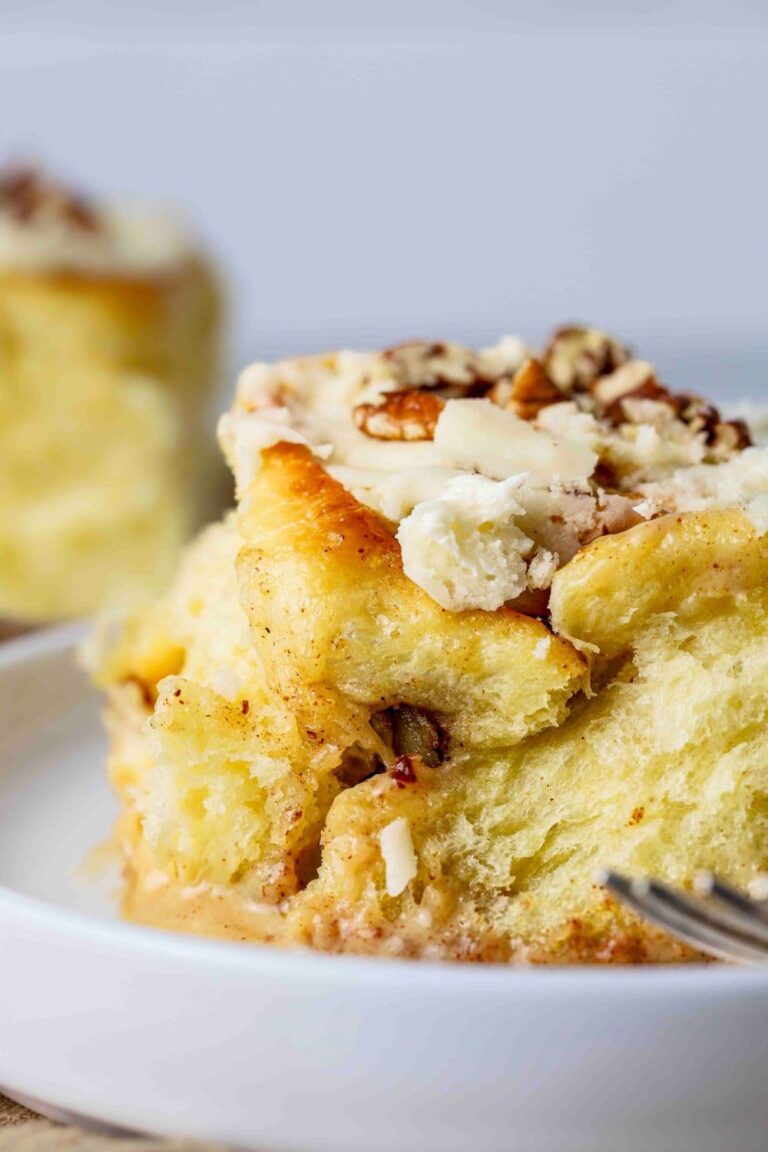

I make Lavash with sourdough. It's a Turkish flatbread that is fantastic for wraps using meats, greens etc.
Great site and thanks for the information.
Can you give me some details on how you make sourdough lavash.
Wow. I’m new to sourdough, and have tried other recipes for flat bread. This one is a winner. My only change was to use 1/2 whole wheat bread flour. It is delicious.
Going to give this a go for this weekend. A friend is going to make Lamb shawarma and I was asked to make the wraps.
My dough didn’t even double in size (I’m an amateur at making sourdough starter, so that’s what I suspect), and it STILL turned out delicious! I had sourdough soft tacos and pizza wraps with it and it is so good. I’m excited to try other combos with it—maybe turkey bacon avocado or even using the flatbread as buns for cheeseburgers!
How do I store these breads if not using all at once?
I haven't yet tried this recipe so can't rate it just yet, but I can't wait!!
Can you use discard for this recipe?
Yet another perfect recipe. Thank you! Made these for breakfast sandwiches and they were wonderful, soft bendable and very tasty. Very versatile bread. I see many more uses for these.
I've tried flatbread so many times and finally nailed it with this recipe. So delicious! Thank you Pantry Mama!!
I havent tried the recipe yet. All your others have been perfect so I expect this to be also. I am wondering if I want to have these ferment in the fridge when do I do it. I usually like to start making my dough before supper. Do my stretch and folds and them ferment in the fridge until morning or the next day. Love the "sour" taste.
Would it be possible to use discard for this and add some instant yeast?
Yes absolutely you can do that 🙂
How much yeast would you suggest to add when using 200g discard?
Do you normally use fed or unfed starter for this recipe?
Do you suggest using fed or under starter?
I have made this a number of times now. Just perfect. Better than anything you buy. 100g is perfect for kebab type wraps.
Hi, after the bulk fermentation could I put it in the fridge and use it later?
These were great! The dough was so supple and elastic that it took some work to roll it out thin... but it was worth it! I did the second rise in the fridge overnight, then left it out on the counter for a couple of hours before rolling. It turned into a two-person operation with me rolling, and my partner running the stovetop. We brushed the tops with a little bit of garlic butter at the end. We will definitely be doing this again! Delish! Thank you!
Would you add 7 g of instant yeast if using discard?
By mistake I added 100 g whole wheat flour, so had to add 400 g bread flour, not 500g. The flat breads came out stiff. Not soft at all. They were tasty, just not soft. Maybe it is the whole wheat flour?
Hi there, I’m about to make these today. I’m assuming the nutrition information is the whole 18 flatbreads because otherwise whoa! 😆
Also do you think if I cook them I would be able to freeze them? It’s just me and I want to use them for my breakfast before work.
You're right - that's the nutrition for the whole recipe. 🙂 They freeze great! Place them in an airtight container with parchment paper in between each flatbread (so they don't stick).
Fantastic recipe. Thank you so much. It is totally a win win because I can use my discard and the results are delicious.
Do you know if these could be cooked on Blackstone grill. Wondering if the heat would be too high.
Hello,
I don't know why but my dough is always sticky even thought I am adding bread Flour. I knead by hand.
Do you have tips to help me with That?
Hi Kim, there could be a lot of different reasons for sticky dough. In the post, Why is My Sourdough So Wet & Sticky, there are a bunch of troubleshooting options that you may find helpful.
This is the second sourdough flatbread I've made and I won't need to look any farther. It was perfect!
These were wonderful! I didn’t have time to finish the first evening so I popped the doubled dough into the fridge overnight. Next day for lunch I measured out the individual portions and fried them up. Probably would have been better if I’d had time to let the dough relax again after warming up, but hey, they were great. I love how forgiving this dough is. It was great with our chicken gyros! It was soft and chewy, just what I wanted!
Chicken gyros sound delicious! So glad you enjoyed them. Thank you so much for your comment!
Just wondering can you freeze them
Absolutely you can freeze them. Once they're cool, I recommend putting some freezer paper or parchment paper between each one and placing the stack in a large ziplock bag or wrap in aluminum foil 🙂